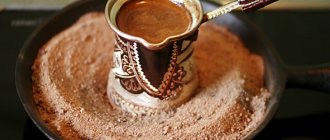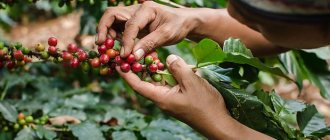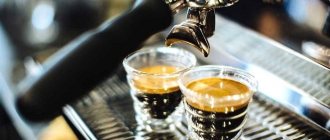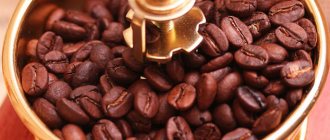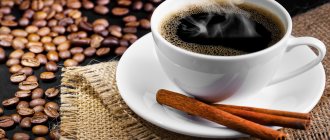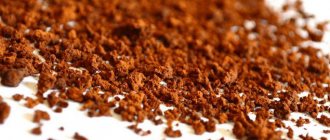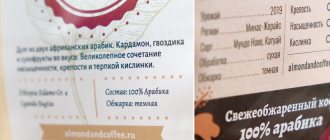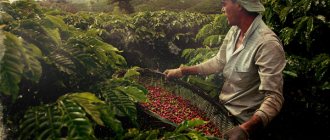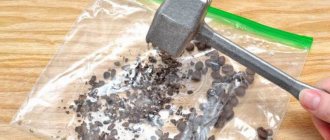Coffee break: purpose and menu features
In the modern business world, maintaining effective partnerships is impossible without the practice of collective discussion of surveys. Meetings must be organized and conducted according to certain rules. This will allow a meeting of any format to be held with maximum efficiency, benefit for the participants, and according to the agreed time frame. Effective coffee breaks allow you to successfully solve a business problem or find a group solution to a problem thanks to the well-thought-out organization of the meeting. During the break, participants will be able to relax in an informal atmosphere, establish and strengthen business relationships.
Why do you need a coffee break?
During conferences or lectures, a person receives a lot of new information in a short period of time. Research by scientists has proven that it is impossible to listen to a lecturer for a long time with the same concentration. After 40 minutes of information flow, attention dissipates, the person begins to either get bored or stops perceiving the material. At such moments, distracting the participants with a short pause, taking place in an informal setting, will defuse the atmosphere of the conference.
During pauses, new connections are created and new material is discussed. Participants receive a boost of energy, reboot and are ready to listen to the lecturer’s words with renewed vigor. This is also useful in office work, when employees can take a break from their computers, chat or think about new ideas.
Coffee time should be regulated by a time order so that guests do not get confused.
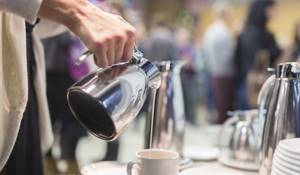
Historical excursion
Coffee break: what does it mean? This is the name for a short break lasting 10–40 minutes, which is spent during a business meeting, business conference for a snack, free communication (the terms coffee time, coffee break are also used). The concept comes from the English coffee break. Most often, cream, containers with boiling water, and sweets (sweets, cookies) are placed on the table. Less commonly, the list is supplemented with alcoholic drinks and hot snacks.
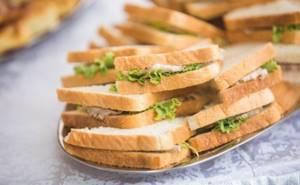
Supposedly, the first coffee break was held in 1936 in America. Back then, such events were organized to popularize the product and manufacturers. Since then, this format has become very popular in the business environment, and later – one of the most popular forms of corporate leisure. There are reports of similar interruptions during meetings held by the wives of Norwegian immigrants in Stoughton, Wisconsin, where the city has celebrated an annual festival since 1880. American behavioral psychologist John B. Watson played a significant role in promoting the aromatic drink and the concept of the coffee break.
Origins of the coffee break
The name of this event originates from the English words coffee break, which means a break, a smoke break, a pause during work or an event. Such breaks appeared in 1936 in the United States. At that time, such pauses were used to advertise a coffee drink, which served to benefit the coffee manufacturer.
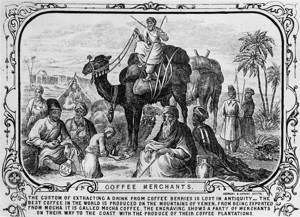
1850: A servant serves coffee to a group of Yemeni coffee merchants who have set up camp in the desert on their way to Mocha. (Photo by Hulton Archive/Getty Images)
The tradition of holding a coffee break is the same all over the world, and it is loved in all countries. One of the first rules is the limited time allocated for a coffee break. The European standard for the duration of such a break is: a minimum of fifteen, and a maximum of forty minutes. Also traditional is the number of dishes that should be placed on the table.
Rules
A coffee break is an invariable attribute of a well-prepared event; it directly indicates the level of its implementation. The experienced team of the “Russian Traditions” chain of cafes and banquet halls in Moscow and St. Petersburg will help you organize a break during a corporate meeting at a professional level, select the optimal menu within the available budget, and present the dishes beautifully. The purpose of organizing a coffee break is to give the event participants the opportunity to relax, discuss the information they heard, and share their impressions. A short break mobilizes the listener’s attention, pushes him to take a fresh look at things and make the right decision.
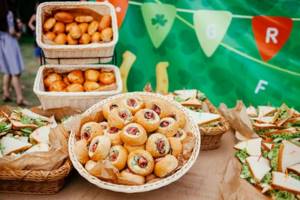
Buffet and coffee break are similar, but not the same concepts. They differ in their motives and menu specifics. According to the format, participants are not assigned specific seats; they pour their own drinks and eat while standing. The duration depends on the format and duration of the meeting. As a rule, there are 2–4 coffee breaks per event, approximately every 2–3 hours. It is customary to organize it during the daytime, according to the agreed regulations. The menu should include light snacks and sweets - they are convenient to eat. Hearty, high-calorie dishes that are consumed using cutlery are not served. When preparing and compiling the menu, it is important to take into account the religion of the participants, health characteristics, and season. The higher the status of the participants, the more refined the service and the higher the level of food and drinks.
There are several types of coffee breaks:
- philosophical - consists of a seminar, a short break, including food, delicious drinks, discussion of philosophical issues is acceptable;
- buffet cocktail - a break occurs after a training, conference, tea, coffee, light snacks are offered;
- outdoor tea party - it can be held outdoors, but usually a banquet hall with the necessary equipment is chosen.
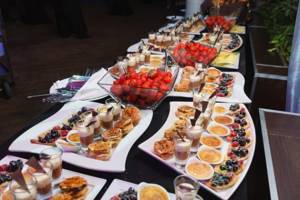
To prepare large-scale corporate events and negotiations, catering services are in demand, provided by catering restaurants. They include not only preparation and delivery of goodies, but also serving, table decoration, serving guests, and cleaning at the end of the meeting. The difficulty of running a coffee break flawlessly lies in its short duration, limited range of dishes and at the same time the need to satisfy the expectations of the participants.
Menu types
Correctly selected dishes will help to successfully implement the functions of a coffee break, satisfy the feeling of hunger, ensure a comfortable state of guests and a favorable emotional background. Several menu options have been developed, which are chosen based on the scale, specifics of the event, the number of participants, and the special needs of some of them (additional fructose is included for diabetics, freshly squeezed juices for vegetarians).
| Coffee break menu options | Peculiarities |
| Base | Includes a basic set of snacks - baked goods (muffins, cookies), less often small sandwiches, sandwiches. The drinks most often chosen are bagged tea and coffee granules, supplemented with sugar, milk, and lemon. |
| Economy | The menu consists of a budget set of dishes. Customers can order canapes with herring, tapas on crispy toast with smoked ham, sausage, bruschetta with cheese, croissants with tuna, salads in tartlets. The top places are occupied by meat, fish, vegetable, cheese tiny sandwiches, small sandwiches (bruschetta or croissants). Plate salads are popular - with baked chicken breast and fried champignons. The list of drinks is complemented by juice and dessert - chocolates. |
| Traditional | Often includes products such as a chicken sandwich on a lettuce leaf, meat canapés, and cheese wedges on a skewer. For dessert - sweets, puff pastry bagel. |
| Premium | This type of menu contains the maximum number of items, which allows the guest to choose the most delicious product for themselves. All types of canapés, meat sandwiches, salads in cups, and fruit slices are popular. For dessert, in addition to cookies and sweets, they offer small pies, cakes, and mini baskets with cream and berries. |
Popular drinks include traditional tea, coffee, mineral and sweet water, as well as juice, berry juice, and mulled wine (with or without alcohol).
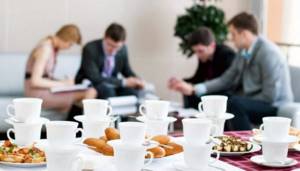
One of the basic functions of a coffee break is to provide an opportunity to relax, get closer to interesting people, and make the atmosphere light and comfortable. Properly selected dishes and drinks will allow you to successfully achieve your goals and win over the participants of a seminar or business meeting. It is important to pay due attention to serving - plates should be accessible from anywhere, they are placed “in a circle”, that is, from cutlery, napkins, the guest moves on to appetizers, hot dishes, and then to drinks. This approach will make it possible to rationally use space and avoid crowds.
Menu options
The composition and description of the menu directly depends on the scale of the event.
There are several menu options:
- basic;
- economy;
- traditional;
- premium;
- alcoholic.
What's included in the basic menu
Drinks: tea bags, instant coffee. Additionally, sugar, milk and lemon slices are served.
Dessert: any cookies, small muffins or mini rolls.
Economy
Packaged juice is added to basic drinks, and chocolate candies are added to dessert. In addition, the menu includes cold appetizers: sandwiches with smoked sausage or ham.
Traditional
This option is varied, and instead of instant coffee, it is customary to serve natural coffee.
Bagged tea is replaced with freshly brewed loose leaf tea.
A mandatory menu item is mineral water, sugar, cream, lemon and fruit juice.
Sandwiches with meat, sliced cheese, canapés with ham, and vegetables are suitable as snacks. For dessert you can offer sweets and muffins.
Premium
The most expensive menu option includes several types of natural coffee, green and black tea, several types of freshly squeezed juice, mineral water, and fresh fruit lemonade with ice.
Additionally, sugar, cream, honey, lemon and milk are served.
For a snack you can prepare meat and vegetarian sandwiches, cheese, canapés with goose liver pate, fruits and vegetables on skewers.
Cakes, muffins, and chocolate are added to dessert.
If you are interested in the difference between a latte and a cappuccino, read our article.
What is coffee frappe? Our publication will tell you about this.
Useful properties and contraindications of rooibos tea - here: https://chay-i-kofe.com/chay/vidy/travyanoy/chay-roybush-roybos-poleznye-svoystva/
Alcohol
In addition to the standard set of food and drinks, several types of table wine and hot snacks are required.
Event etiquette
According to generally accepted rules, a coffee break should be held strictly within a certain time frame, during a meeting or discussion. During a snack, it is unacceptable to discuss work issues, organize debates, or ruin professional topics. But at the same time, this is a great opportunity to enjoy a casual conversation and make new acquaintances. It is considered bad form to start discussing other participants untimely.
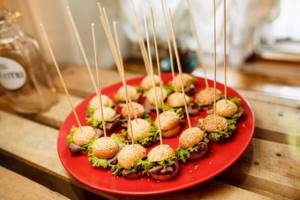
Drinks and light snacks should be served using a serving cart or trays. There should be no papers on the table. Those treating themselves must not break the accepted order: cutlery - snacks - drinks. It is better to approach the table again than to take too much food at once. One of the key criteria for a successful coffee break is space, and the basic principle is self-service and the absence of an assigned place.

